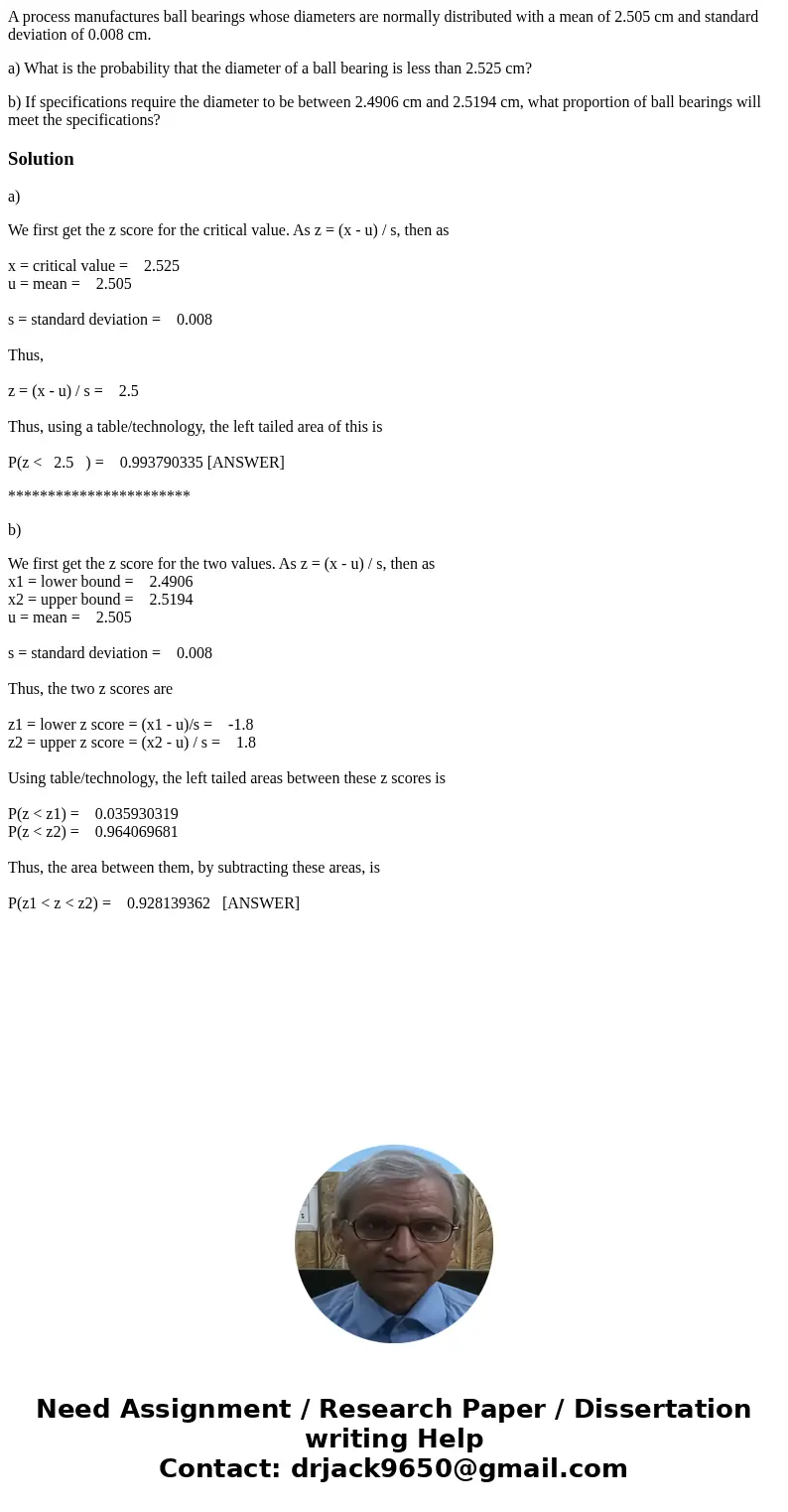A process manufactures ball bearings whose diameters are nor
A process manufactures ball bearings whose diameters are normally distributed with a mean of 2.505 cm and standard deviation of 0.008 cm.
a) What is the probability that the diameter of a ball bearing is less than 2.525 cm?
b) If specifications require the diameter to be between 2.4906 cm and 2.5194 cm, what proportion of ball bearings will meet the specifications?
Solution
a)
We first get the z score for the critical value. As z = (x - u) / s, then as
x = critical value = 2.525
u = mean = 2.505
s = standard deviation = 0.008
Thus,
z = (x - u) / s = 2.5
Thus, using a table/technology, the left tailed area of this is
P(z < 2.5 ) = 0.993790335 [ANSWER]
***********************
b)
We first get the z score for the two values. As z = (x - u) / s, then as
x1 = lower bound = 2.4906
x2 = upper bound = 2.5194
u = mean = 2.505
s = standard deviation = 0.008
Thus, the two z scores are
z1 = lower z score = (x1 - u)/s = -1.8
z2 = upper z score = (x2 - u) / s = 1.8
Using table/technology, the left tailed areas between these z scores is
P(z < z1) = 0.035930319
P(z < z2) = 0.964069681
Thus, the area between them, by subtracting these areas, is
P(z1 < z < z2) = 0.928139362 [ANSWER]

 Homework Sourse
Homework Sourse